18 Wild Animals in United Arab Emirates [Wildlife in United Arab Emirates]
Want to know more about the wildlife in United Arab Emirates?
Discover 18 wild animals in United Arab Emirates in this post, as well as interesting facts about them. 🇦🇪
Learn All About Emirati Animals
Ready to learn all about Emirati animals?
I’ve always been fascinated by animals, and by how they can be so different from one country to another. In this guide, we’ll focus on the many animals the United Arab Emirates has on the land, in the sky, and underwater.
I’ve split the guide into 4 categories:
- Native animals from United Arab Emirates
- Endangered animals of United Arab Emirates
- What is the national animal of the United Arab Emirates?
- How many animals native to the United Arab Emirates?
Let’s dive in right away with our first category!
Native Animals from United Arab Emirates
The United Arab Emirates is an Asian country located in the western part of the continent, at the crossroads of Asia, Africa, and Europe. It is situated on the Arabian Peninsula, has been inhabited for more than 125,000 years, is mostly inhabited by expatriates, is made of 7 emirates (of which the more famous are Abu Dhabi and Dubai), and is a monarchy and an Islamic country. It is bordered by Saudi Arabia and Oman, and although its largest and most famous city is Dubai, its capital is Abu Dhabi, which counts more than 1,512,000 inhabitants.
An interesting part of the country that I wanted to tackle is its wildlife. In light of that, I have listed the best of it, and I hope you will love learning what animals live in the United Arab Emirates.
Here’s the United Arab Emirates animals list.
1. Arabian oryx
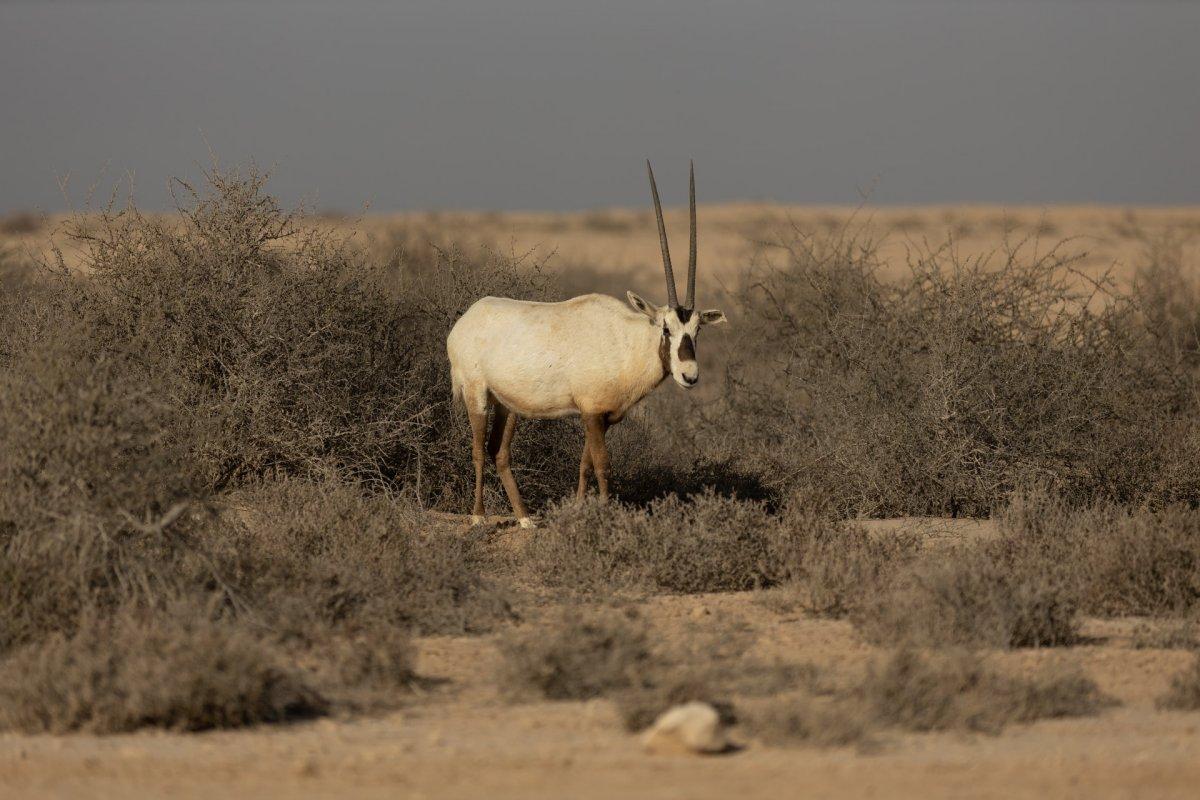
- Name: Arabian oryx
- Scientific name: Oryx leucoryx
- Conservation status:
The Arabian oryx, also known as the white oryx, is by far the most important animal in the United Arab Emirates: it is the national emblem of the country and is well-known for being the first animal to revert back from extinct in the wild to vulnerable.
There are about 1,220 individuals left in the wild, and up to 7,000 in captivity. They roam the arid areas of the Arabian Peninsula and feed on grasses, as well as fruits, tubers, and roots.
2. Arabian wolf
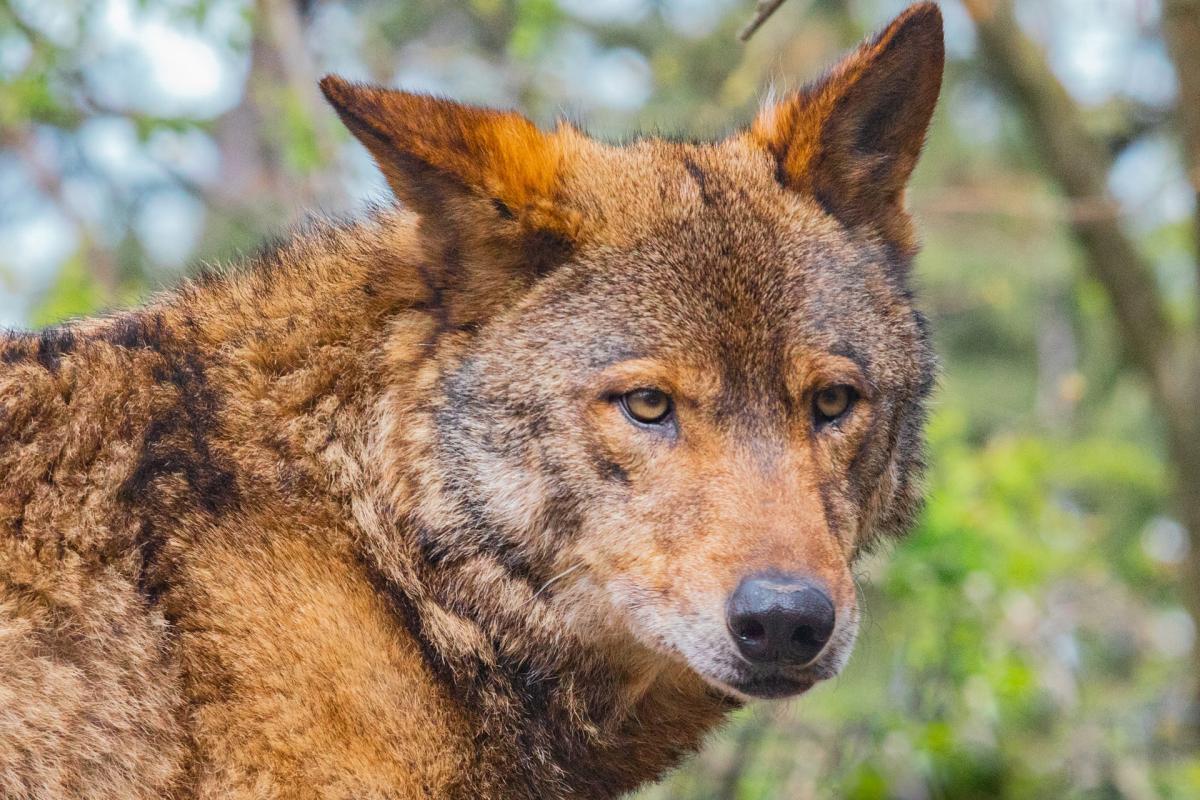
- Name: Arabian wolf
- Scientific name: Canis lupus arabs
- Conservation status:
The Arabian wolf is a subspecies of the gray wolf native to the Arabian Peninsula and the neighboring areas of Jordan and the Negev Desert. It is the smallest of all wolves and is particularly well adapted to its desert environment.
This wolf lives in small groups, and feeds on small to medium-sized prey, although it is considered omnivorous: in some areas, it does not hesitate to feed on excess products and human refuse, as well as roadkill and other carrion.
3. Blanford’s fox
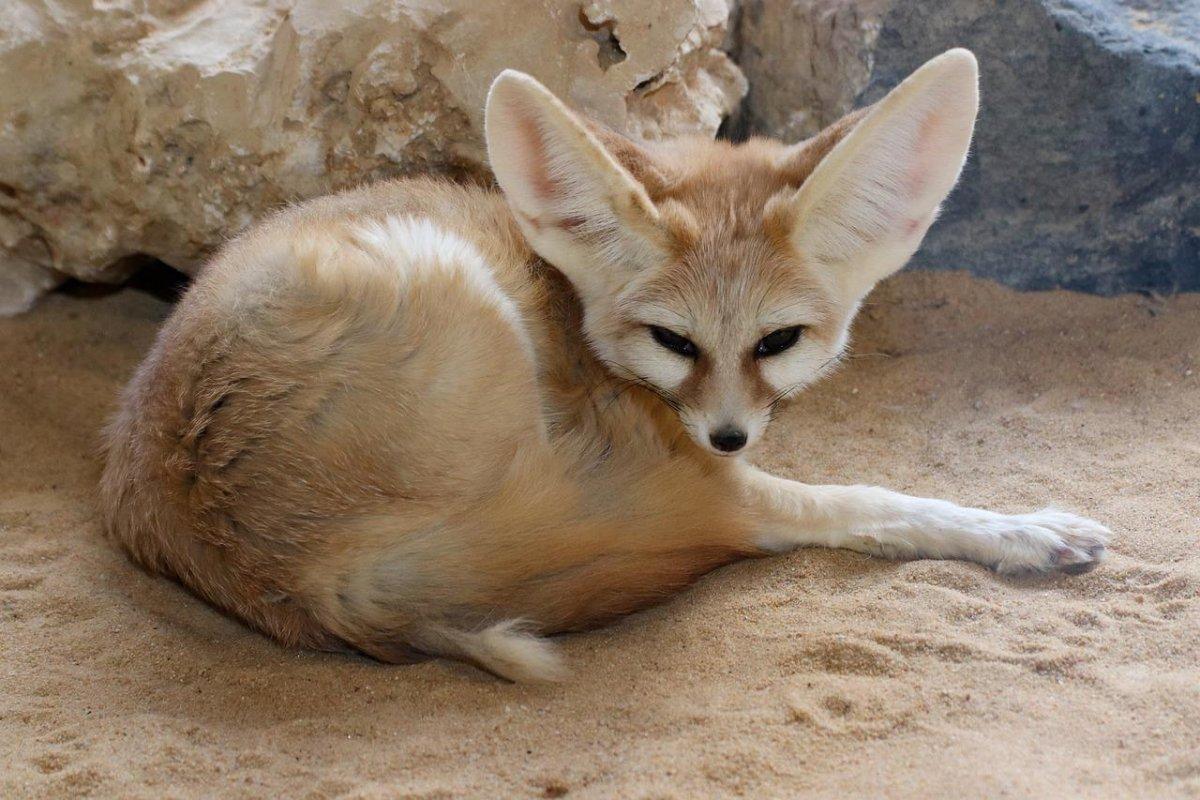
- Name: Blanford’s fox
- Scientific name: Vulpes cana
- Conservation status:
Blanford’s fox is a small species of fox native to Central Asia and the Arabian Peninsula. Although it mostly inhabits southwestern Asia, in which it was first discovered, recent reports have found it all around the coastlines of the Arabian Peninsula, as well as in Israel and Jordan.
This fox is omnivorous and can be found as high as 1,200 m / 3,937 ft above sea level. It was recently spotted in Jebel Hafeet, in the United Arab Emirates.
4. Striped hyena
- Name: Striped hyena
- Scientific name: Hyaena hyaena
- Conservation status:
The striped hyena is a species of hyena native to northern and eastern Africa, as well as the Middle East, Central Asia, the Indian subcontinent, and the Caucasus. It is much less famous than its close relative, the spotted hyena (widely known as the laughing hyena), and is experiencing serious declines due to persecution and depletion of prey.
This hyena is nocturnal and leaves its den during total darkness. It is primarily a scavenger, but some large individuals are known to hunt for their food.
5. Arabian tahr
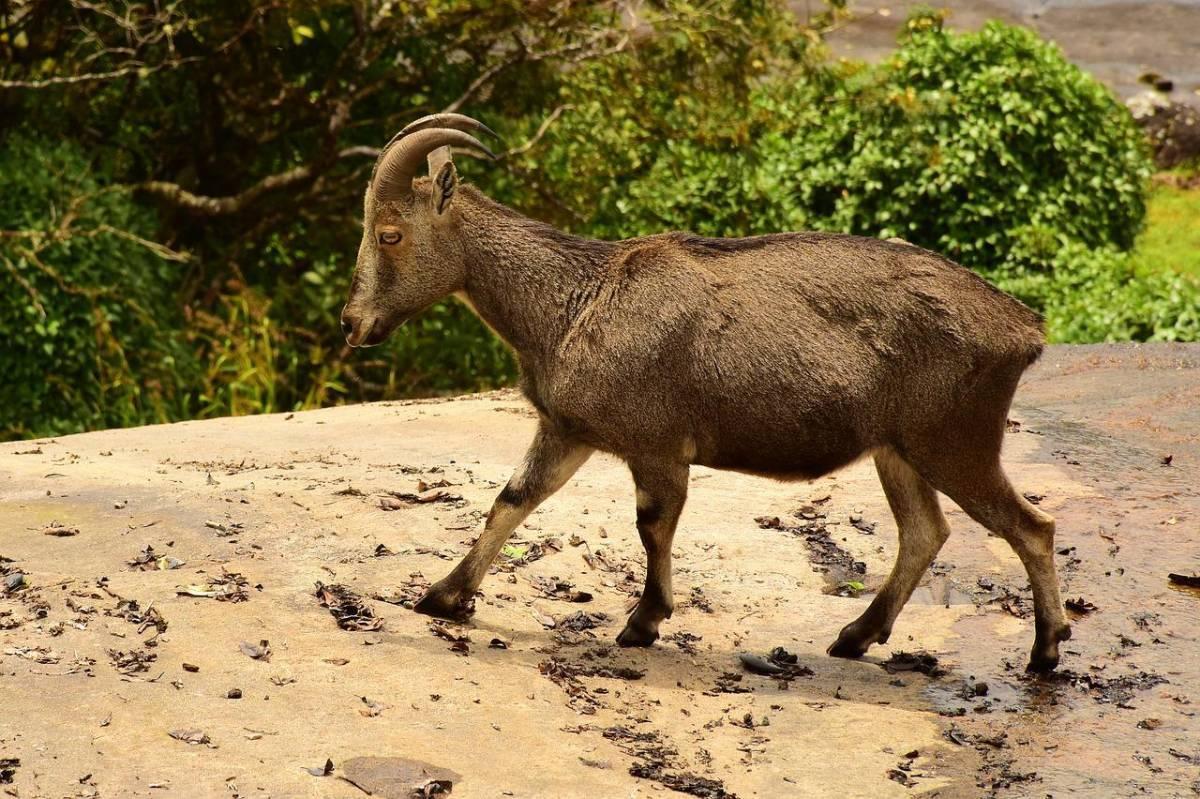
- Name: Arabian tahr
- Scientific name: Arabitragus jayakari
- Conservation status:
The Arabian tahr is a species of wild goat native to eastern Arabia. It is the smallest species of tahr, but is stockily built and has backward-reaching horns in both sexes. It has long, reddish-brown hair on its body, as well as a dark stripe on its back.
This mammal lives on the steep rocky slopes of the United Arab Emirates, at elevations of up to 1,800 m / 5,900 ft above sea level.
6. Mountain gazelle
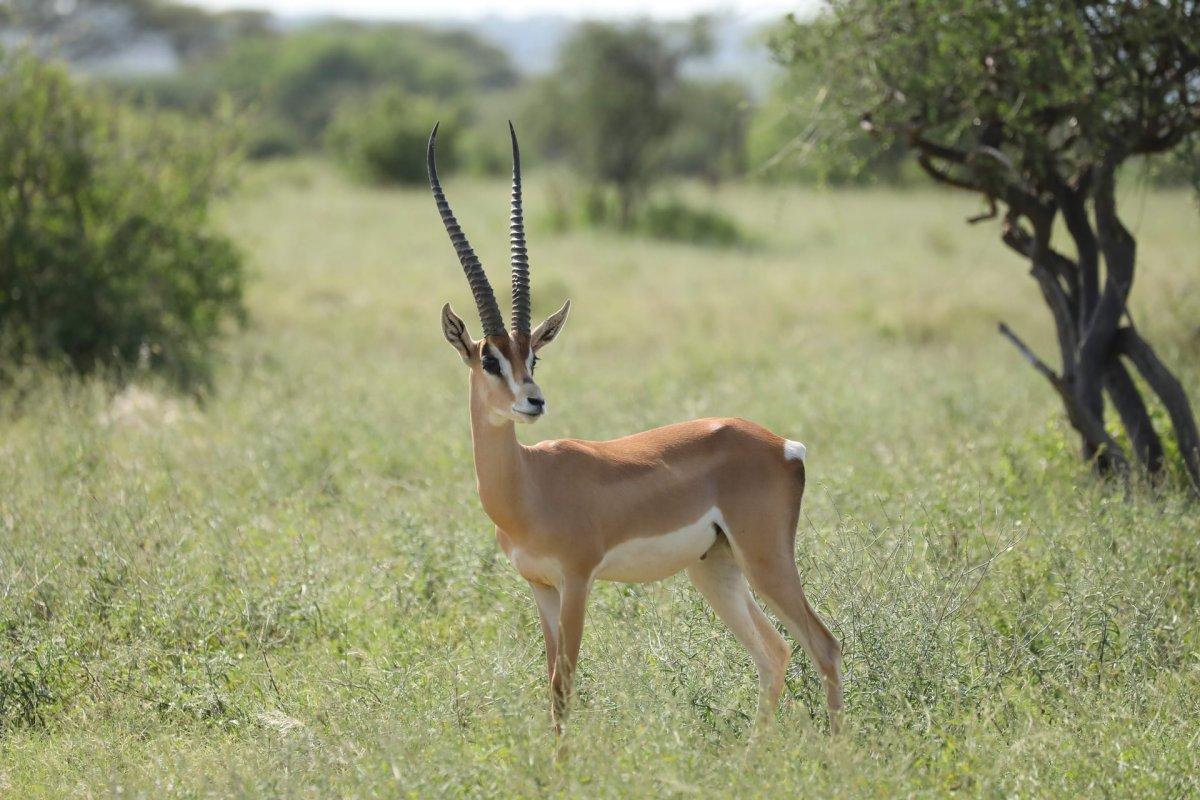
- Name: Mountain gazelle
- Scientific name: Gazella gazella
- Conservation status:
The mountain gazelle, also known as the Israel mountain gazelle, is a species of gazelle native to the Middle East and the Arabian Peninsula. Although its range is fairly wide, its distribution is particularly uneven, and it is considered endangered.
Within their natural range, fewer than 3,000 mountain gazelles remain. They are all threatened by predation from jackals and feral dogs, as well as poachers for their horns, skin, and meat.
7. Indo-Pacific humpback dolphin
- Name: Indo-Pacific humpback dolphin
- Scientific name: Sousa chinensis
- Conservation status:
The Indo-Pacific humpback dolphin, also known as the Chinese white dolphin, is a species of dolphin native to the coastal waters of the western Pacific Ocean and the eastern Indian Ocean. However, its largest population is located along the coast of Abu Dhabi.
This dolphin lives in small groups of fewer than 10 members. It hunts as a group using echolocation, just like most dolphins. After breathing for 20 to 30 seconds, it can dive for up to 8 minutes!
8. Sooty falcon
- Name: Sooty falcon
- Scientific name: Falco concolor
- Conservation status:
The sooty falcon is a medium-sized species of falcon native to northeastern Africa and the Arabian Peninsula. It breeds in the United Arab Emirates and spends the winter in Madagascar and southwestern Africa.
This bird of prey primarily feeds on other birds but also takes on large insects such as dragonflies. It lays eggs in the middle of the summer, and sometimes nests in colonies, which is very rare among falcons.
9. Bonelli’s eagle
- Name: Bonelli’s eagle
- Scientific name: Aquila fasciata
- Conservation status:
There are not that many birds of prey in the United Arab Emirates, and the Bonelli’s eagle, also known as the crestless hawk-eagle, is one of them. It is a large bird of prey native to the Arabian Peninsula, the Indian subcontinent, southeastern Asia, southwestern Europe, and northwestern Africa, and it inhabits mountainous or hilly habitats, at altitudes of up to 1,500 m / 4,900 ft.
This eagle spends a lot of its time flying and soaring over its habitat, and it feeds on a very wide variety of prey (up to 200 species!).
10. Lappet-faced vulture
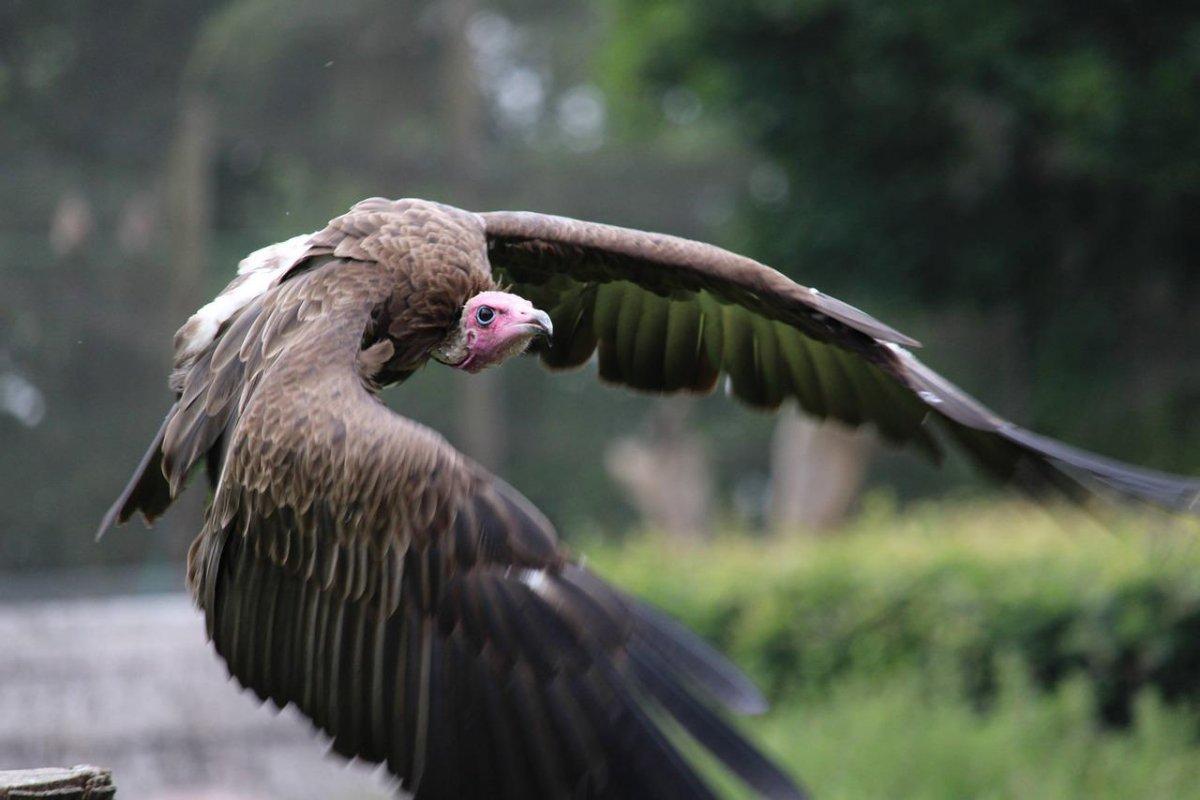
- Name: Lappet-faced vulture
- Scientific name: Torgos tracheliotos
- Conservation status:
The lappet-faced vulture, also known as the Nubian vulture, is a large species of Old World vulture native to sub-Saharan Africa and the Arabian Peninsula. It is the only vulture found in the United Arab Emirates, and one of the very few raptor species.
This vulture inhabits the dry savannas, arid plains, and deserts of the United Arab Emirates. Similarly to other vultures, it is a scavenger and finds animal carcasses by soaring over open areas.
11. Arabian sand gazelle
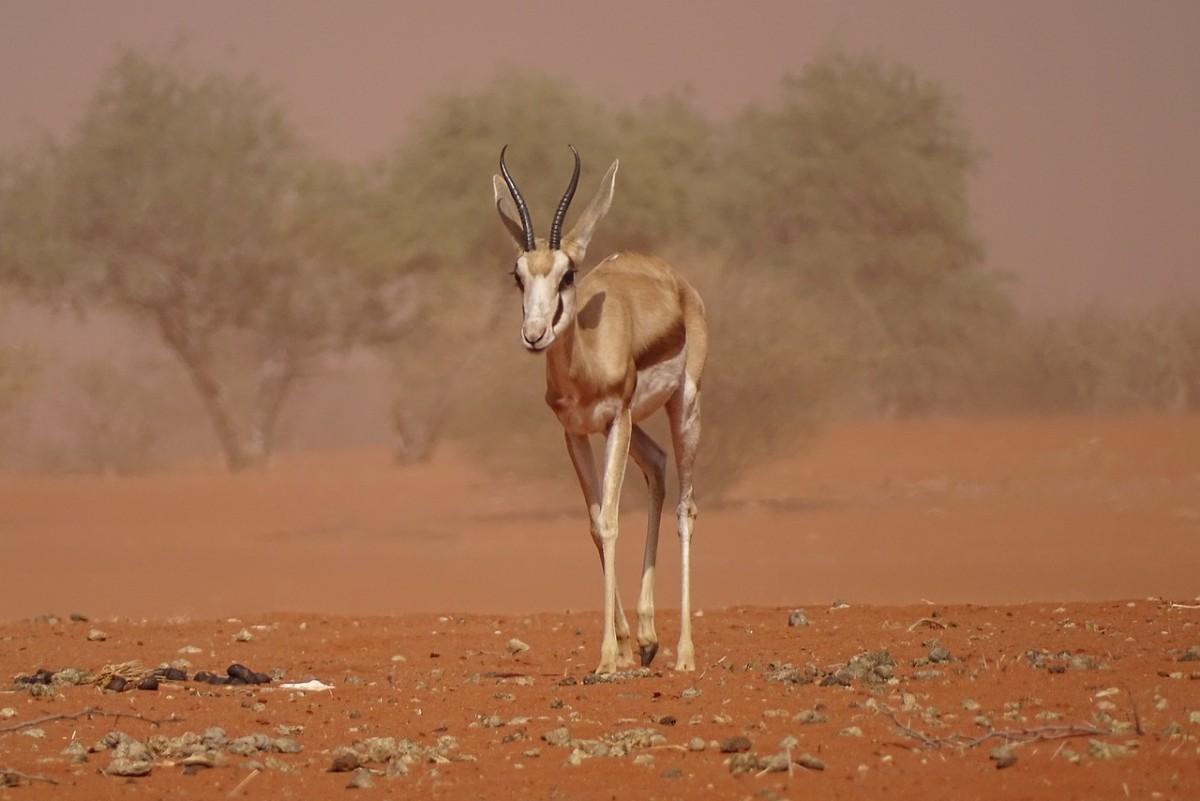
- Name: Arabian sand gazelle
- Scientific name: Gazella marica
- Conservation status:
The Arabian sand gazelle, also known as the reem, is a species of gazelle native to the Arabian and Syrian Deserts, but more generally to the Middle East. It is listed as vulnerable to extinction, and can only be found in small, scattered populations across the United Arab Emirates, Saudi Arabia, Turkey, and Oman.
Fewer than 3,000 Arabian sand gazelles remain in the wild, but there are most likely more than 100,000 of them in captivity and reserves.
12. Asiatic caracal
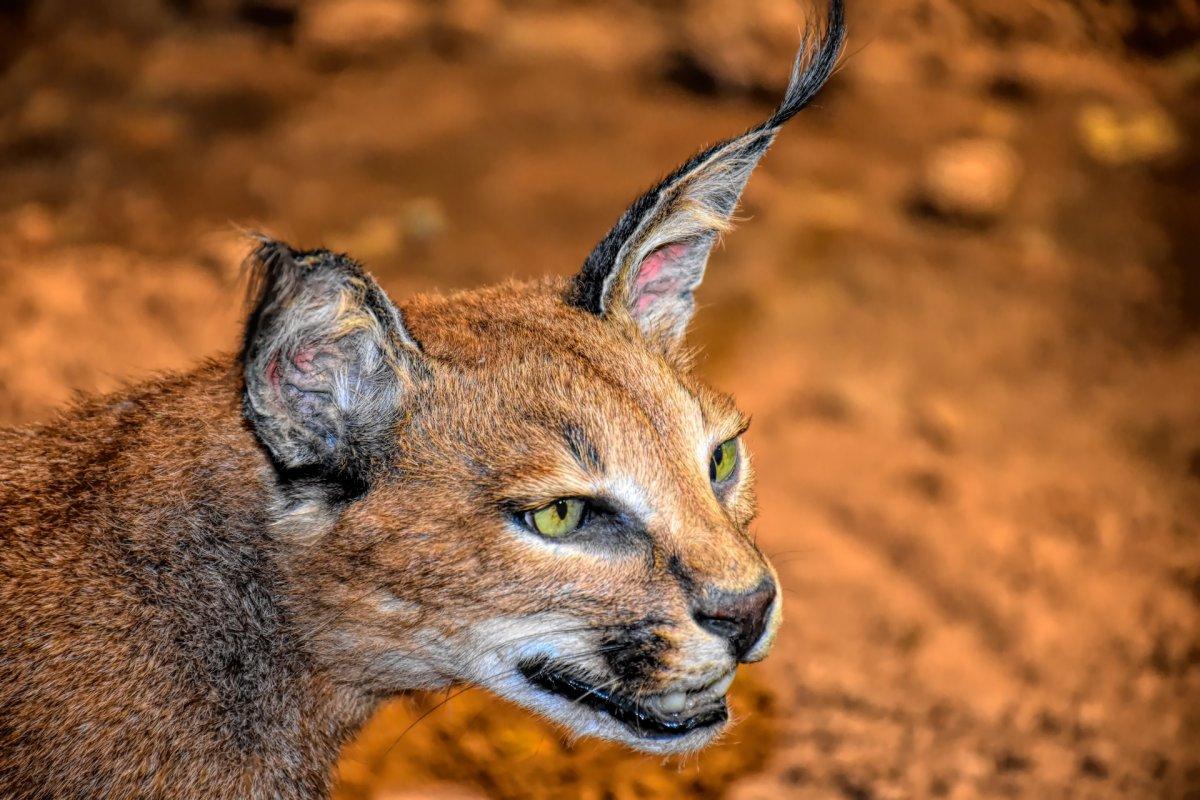
- Name: Asiatic caracal
- Scientific name: Caracal caracal schmitzi
- Conservation status:
The Asiatic caracal is the subspecies of the caracal found in Asia (and not in northern or southern Africa, opposite to its relatives). It is a medium-sized species of wild cat with long legs and a robust build, usually preying on small mammals and birds.
The caracal is particularly important in the Arabic world, being one of its main symbols, and having been tamed and used for courses in countries such as Persia and Egypt.
13. Cape hare
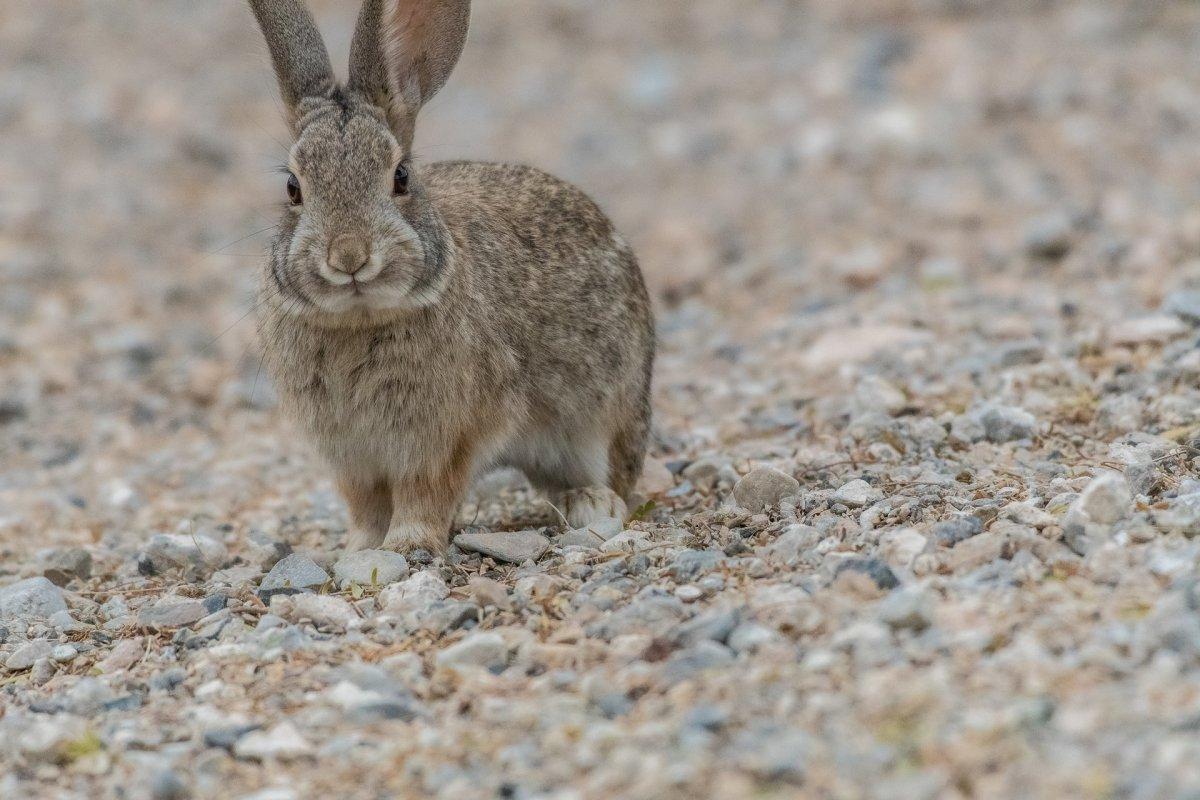
- Name: Cape hare
- Scientific name: Lepus capensis
- Conservation status:
The Cape hare, also known as the desert hare, is a species of hare native to Africa and the Arabian Peninsula, and as far as the Indian subcontinent. It inhabits the grasslands and semi-desert areas of the United Arab Emirates and is active at night.
This hare is herbivorous and is known to participate in coprophagy (eating its own feces). Similarly to other hares, it can run pretty fast and is only outrun by the cheetah within its range.
14. Brandt’s hedgehog
- Name: Brandt’s hedgehog
- Scientific name: Paraechinus hypomelas
- Conservation status:
Brandt’s hedgehog is a species of desert hedgehog native to Central Asia and the Middle East. It was named after the German-Russian naturalist Johann Friedrich von Brandt and is about the same size as the more famous West European hedgehog.
This hedgehog inhabits the arid desert areas and mountains of the United Arab Emirates, and uses natural shelter when it can, but also digs its own den when needed. In order to survive through the winter, it hibernates on a yearly basis.
15. Egyptian fruit bat
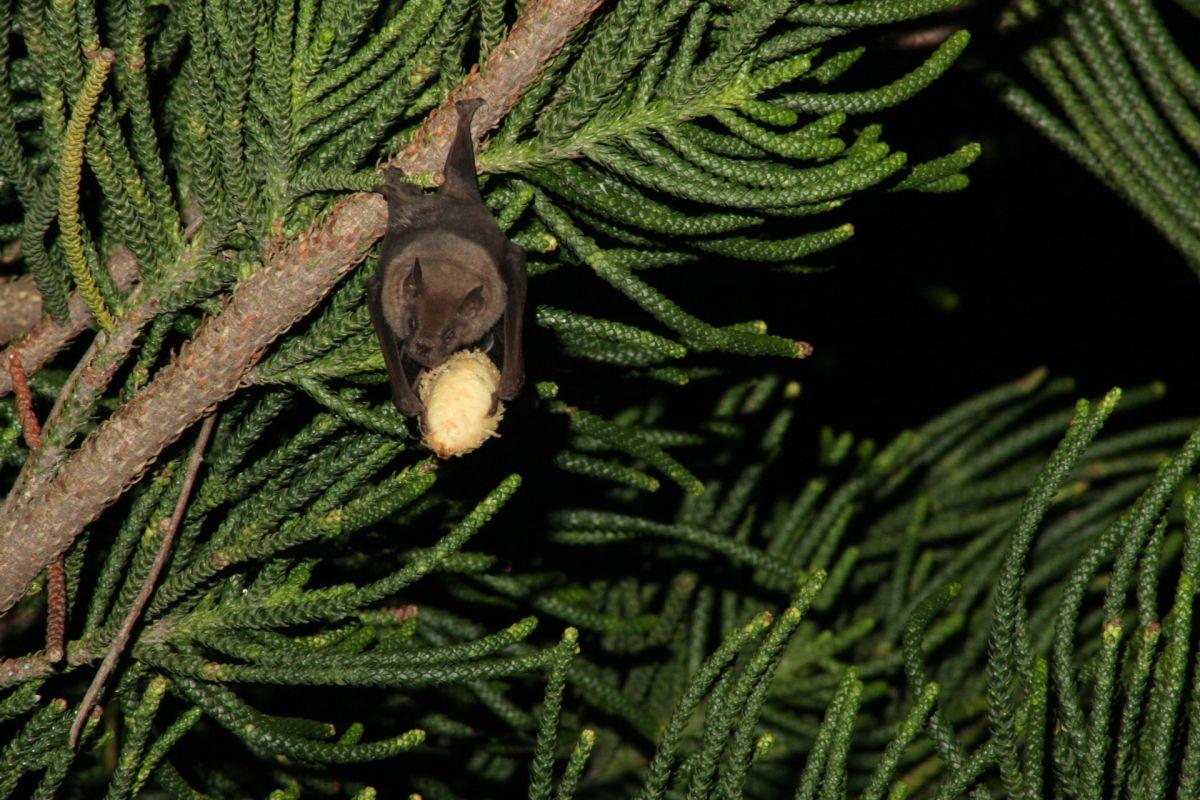
- Name: Egyptian fruit bat
- Scientific name: Rousettus aegyptiacus
- Conservation status:
The Egyptian fruit bat, also known as the Egyptian rousette, is a species of megabat native to the Middle East, Africa, the Indian subcontinent, and the Mediterranean. While it can be found throughout the United Arab Emirates during most of the year, it often moves around depending on fruit availability, because it is indeed a frugivore.
Depending on the area of its range, the Egyptian fruit bat is sometimes considered a pest, often wreaking havoc on commercial plantations.
16. Saw-scaled viper
- Name: Saw-scaled viper
- Scientific name: Echis carinatus
- Conservation status:
If you were wondering if the United Arab Emirates had (dangerous) snakes, here is one of them, the saw-scaled viper, also known as the Indian saw-scaled viper or the little Indian viper. This venomous snake is found in areas of the Indian subcontinent, the Middle East, and Central Asia, and is part of the big four snakes, responsible for causing the most snakebites.
This snake is found in highly populated regions and is pretty well hidden, which is why it bites so often.
17. MacQueen’s bustard
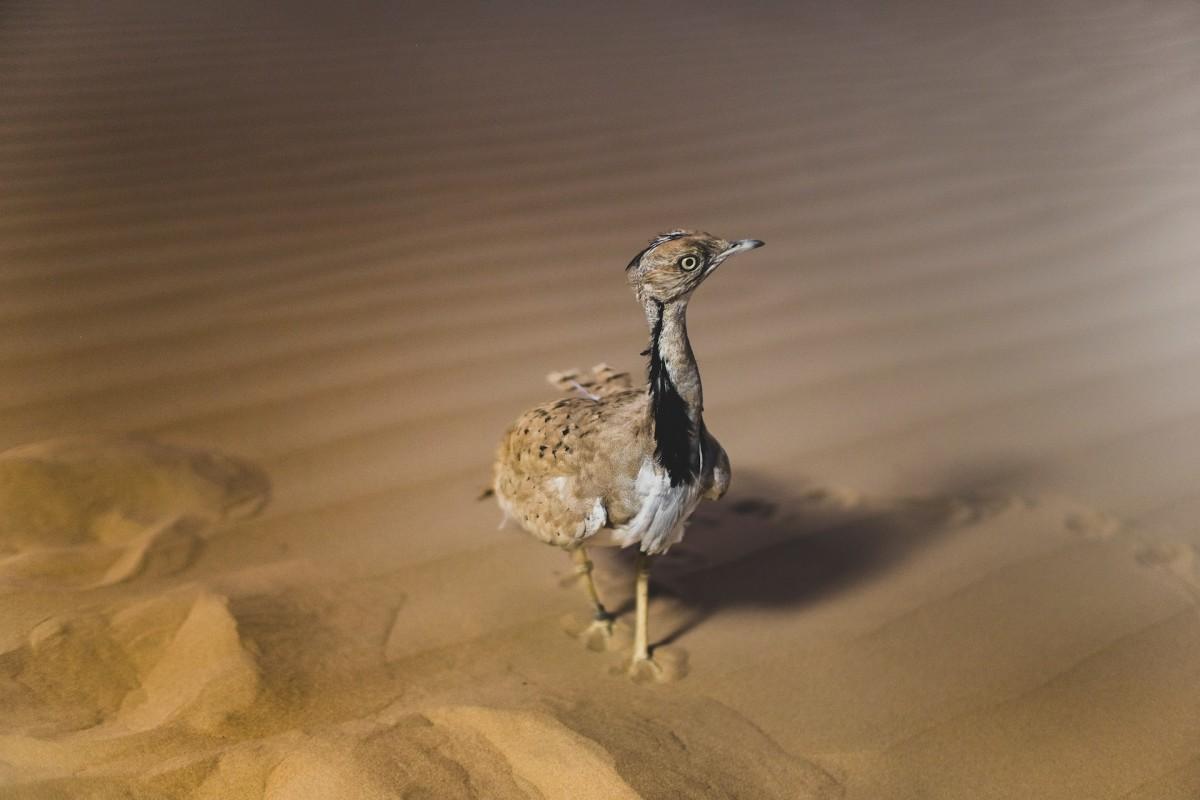
- Name: MacQueen’s bustard
- Scientific name: Chlamydotis macqueenii
- Conservation status:
MacQueen’s bustard, also known as the houbara bustard or the Asian houbara, is a large species of bird in the bustard family. It is native to the steppes and deserts of Asia, from the Arabian Peninsula to western Mongolia, and is strictly protected in the United Arab Emirates.
In fact, 50 birds were released into the desert in the Emirate of Abu-Dhabi, in hopes to preserve this species and increase its numbers within the country.
18. Red-billed tropicbird
- Name: Red-billed tropicbird
- Scientific name: Phaethon aethereus
- Conservation status:
The red-billed tropicbird is a species of tropicbird native to the subtropical and tropical coastlines of the Atlantic and East Pacific Oceans, from the Arabian Peninsula to West Africa, the Caribbean, and Mexico.
It often breeds in the United Arab Emirates, which is ideally located at the crossroads of warm and temperate areas and is home to a very wide range of migratory and resident birds. Overall, it is considered of least concern, but is on the decline nonetheless, and is even considered threatened in Brazil and Mexico.
—
So there you have them, these were my 18 wild animals in the United Arab Emirates. I hope you enjoyed this list and that you learned something new today.
In case you want to learn more about animals in the country, feel free to keep reading, as I still have lots of things to tell you about:
Endangered Animals of United Arab Emirates
This is definitely the saddest part of the list, but it is very important to raise awareness. Because of this, let’s go through the list of endangered animals in the United Arab Emirates.
Here are the animals in danger of extinction in the United Arab Emirates.
- None
- Green sawfish
- Emirati leaf-toed gecko
- Hawksbill turtle
- Sand tiger shark
- Great hammerhead
- and 9 more…
- Zebra shark
- Javanese cownose ray
- Arabian tahr
- Whale shark
- Lappet-faced vulture
- and 24 more…
To see the full list of endangered species in the United Arab Emirates, head over to the International Union for Conservation of Nature’s Red List.
What is the National Animal of the United Arab Emirates?
The national animal of the United Arab Emirates is the Arabian oryx.
Aside from the United Arab Emirates, the Arabian oryx is also the national animal of Oman, Jordan, Qatar, and Bahrain, which goes to show how culturally and historically important this animal is throughout the entirety of the Arabian Peninsula.
The Arabian oryx is a medium-sized species of antelope with long, straight horns and a tufted tail. It is unique due to having been considered extinct in the wild and recovering from it over the years.
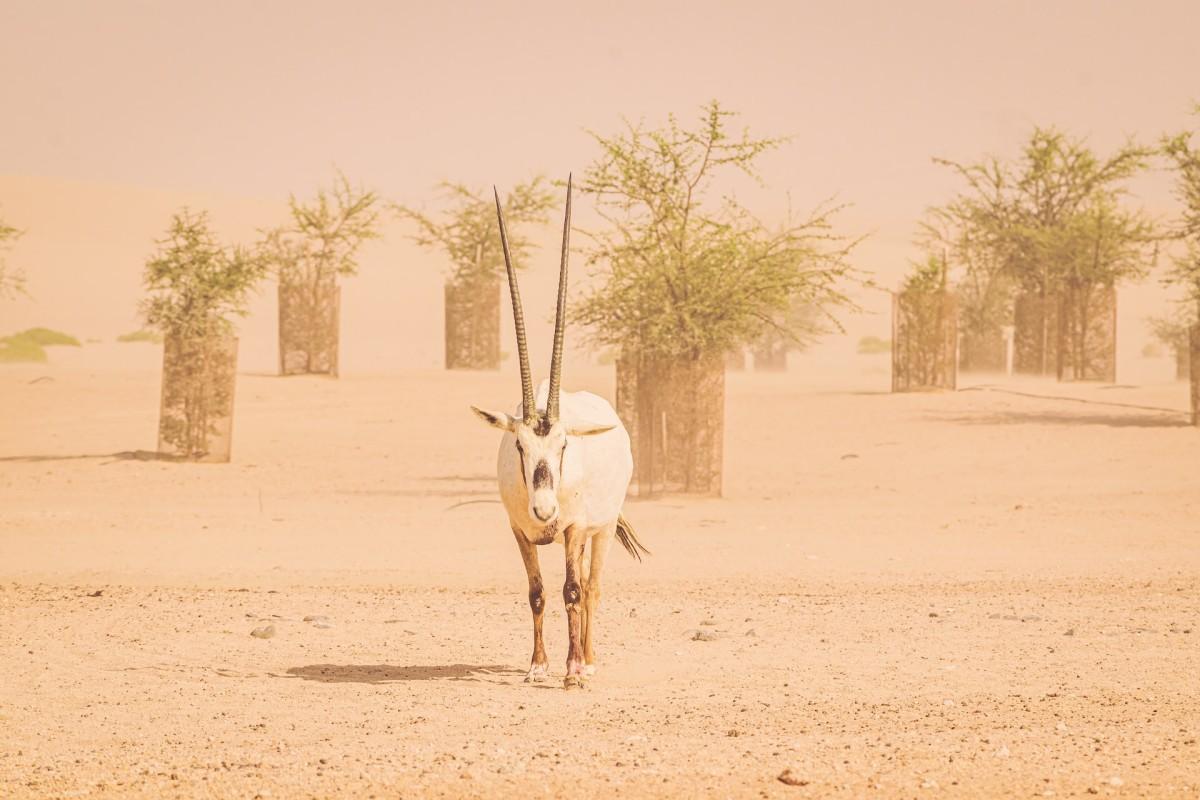
How Many Animals Native to the United Arab Emirates?
What is the diversity of native animals in the United Arab Emirates?
Let’s look at the total number of species of Chordata (mammals, birds, fishes, and reptiles).
Total number of animal species in the United Arab Emirates: 1,247 (5,029 in total in West and Central Asia)
More About Animals in the World!
Loved these United Arab Emirates animal facts? Want to see what animals live in other countries?
Then check out these posts:
Or click here to see ALL the facts up on the blog! Spoiler alert: there’s A LOT of them.
Share the knowledge! Click on the buttons below to share information about these famous animals in the United Arab Emirates with your friends, and help them learn more about the world 🙂
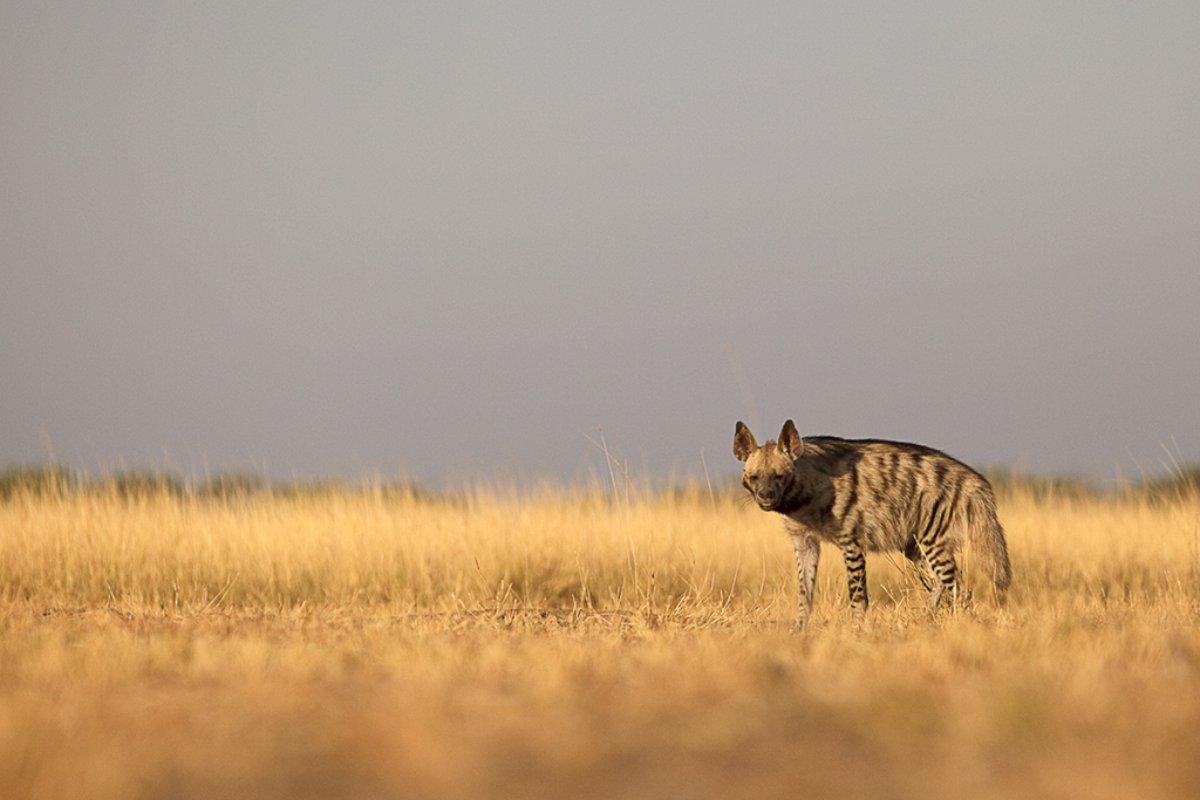
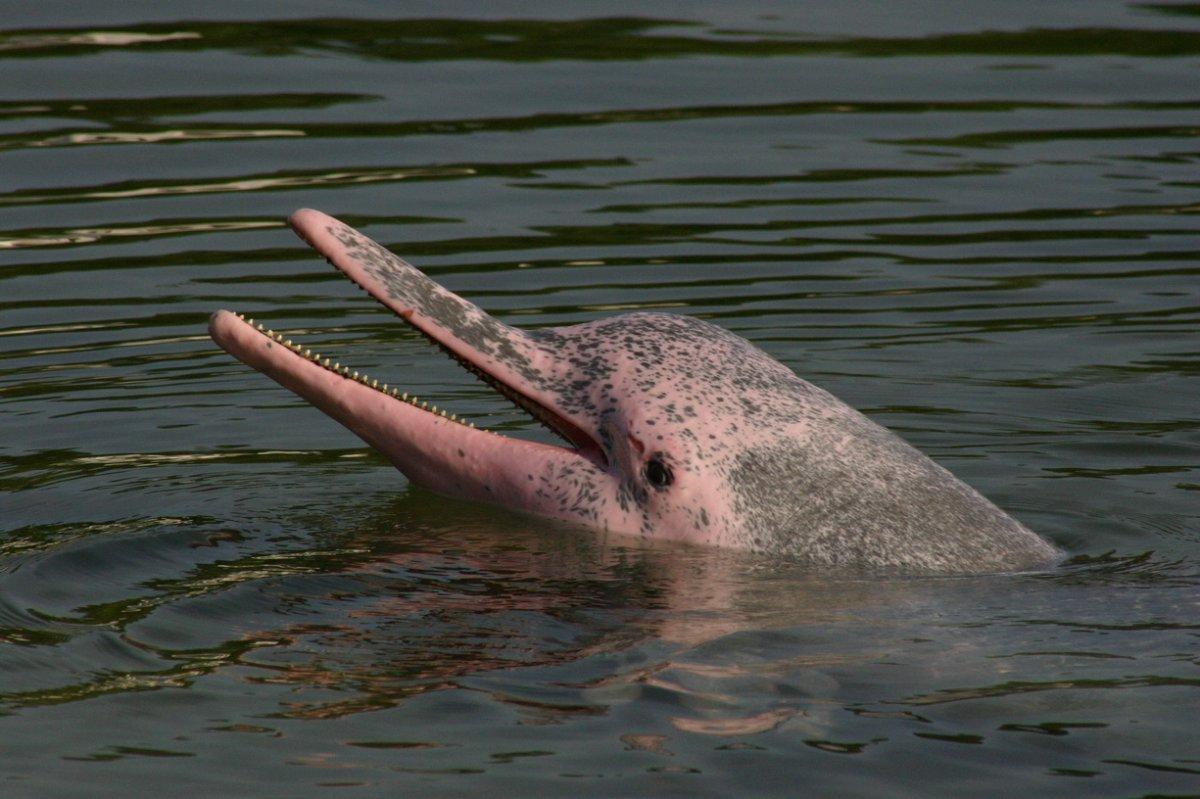
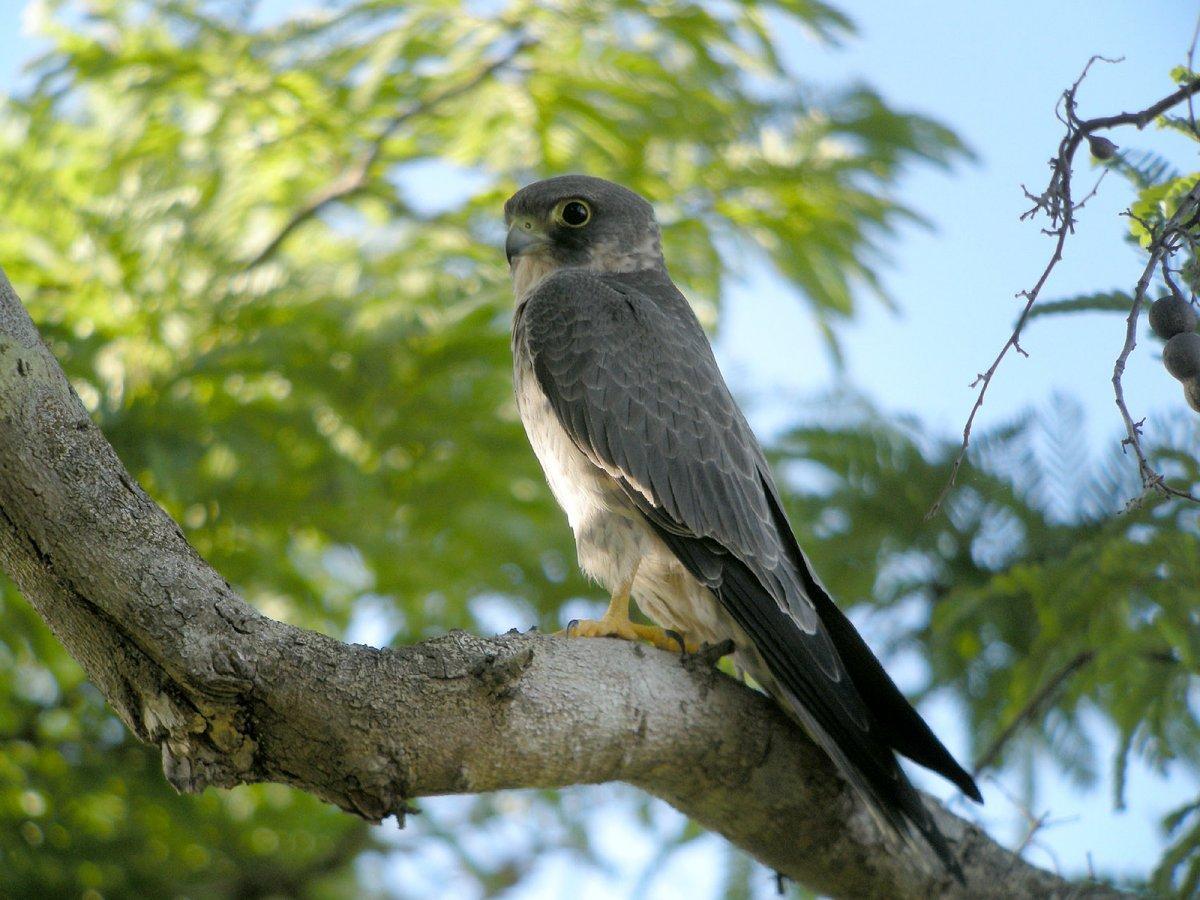
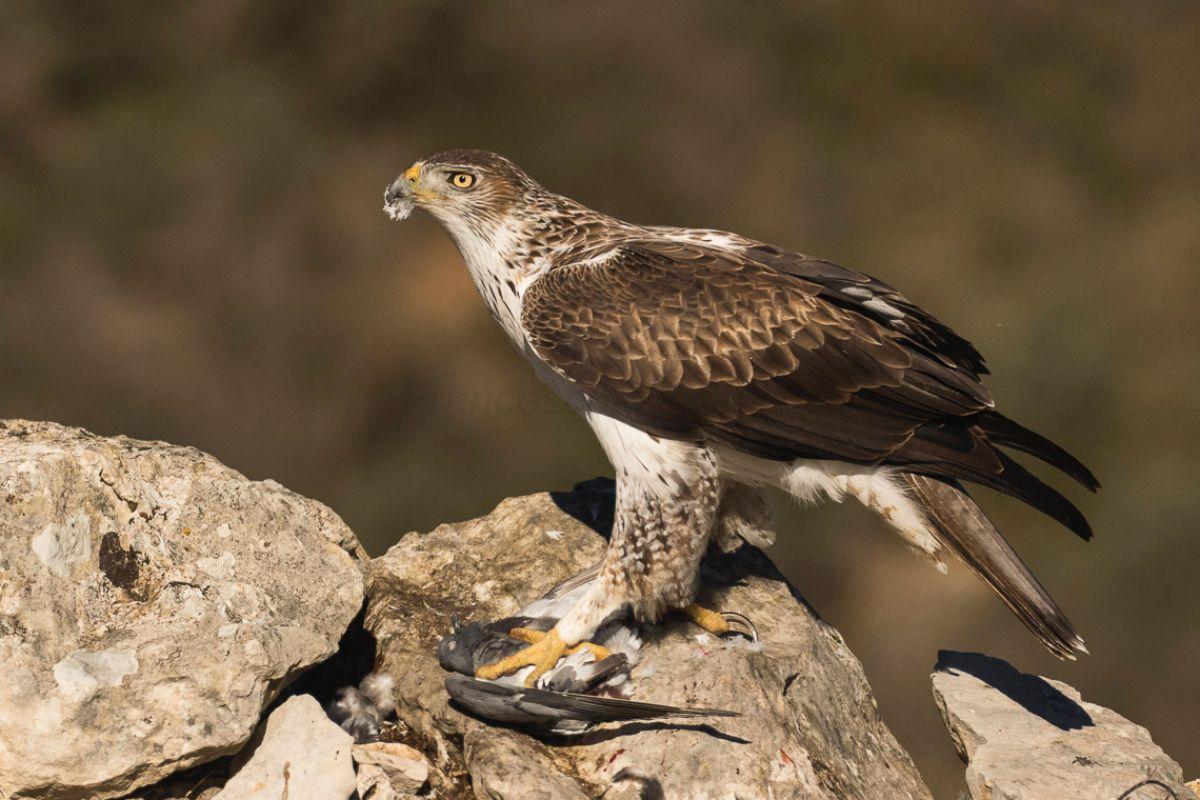
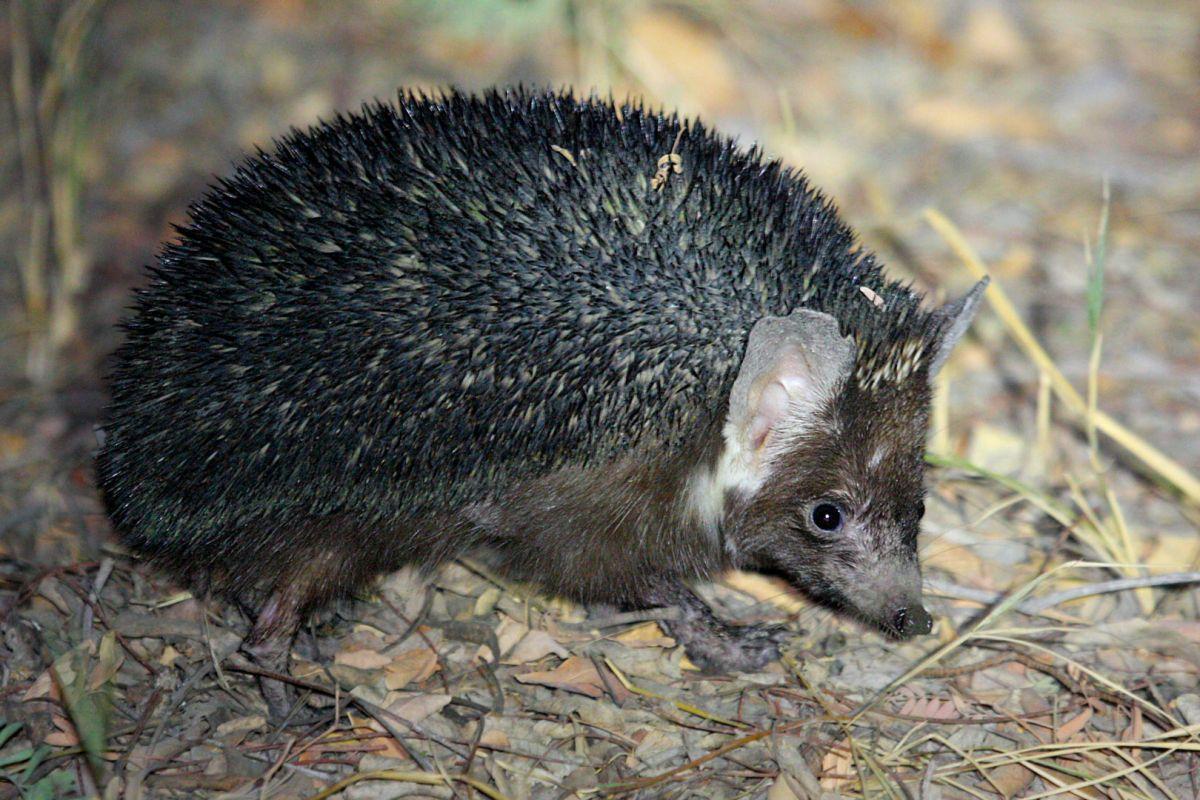
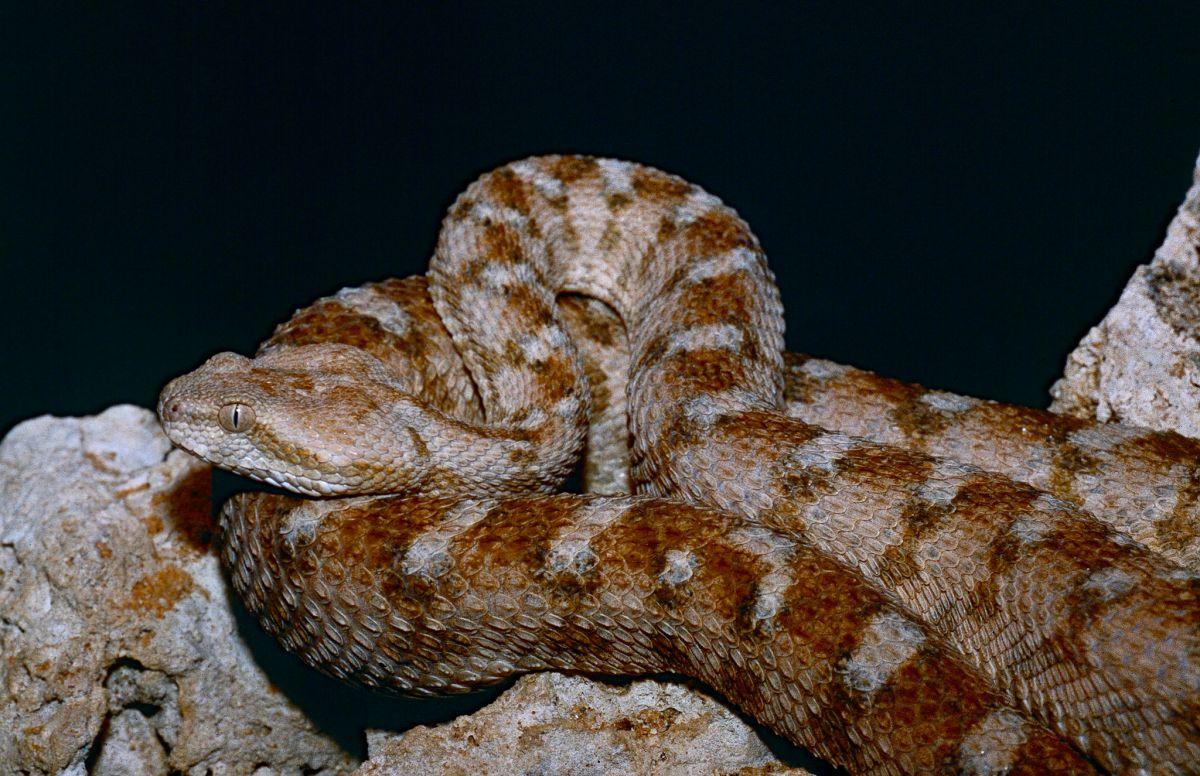
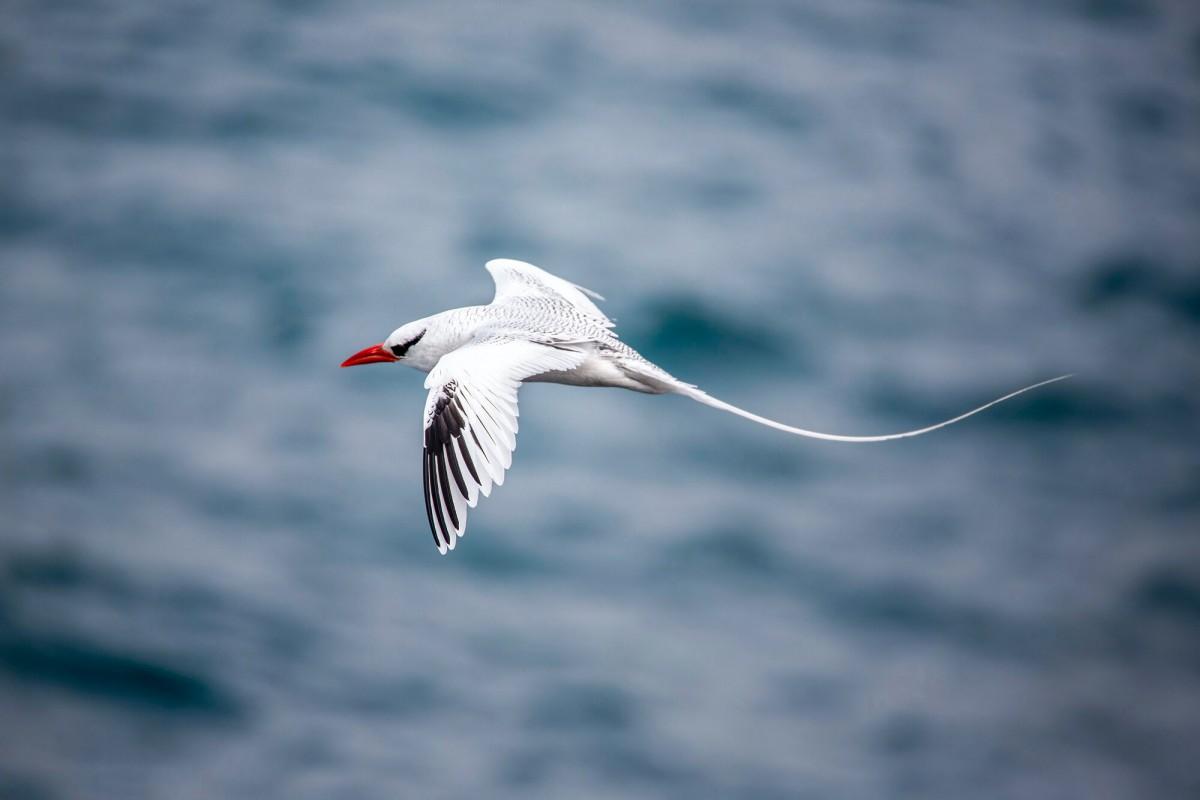

![18 Wild Animals in Malawi [Wildlife in Malawi]](https://www.kevmrc.com/wp-content/uploads/2022/12/18-wild-animals-in-malawi.jpg)
![21 Wild Animals in Libya [Wildlife in Libya]](https://www.kevmrc.com/wp-content/uploads/2022/11/21-wild-animals-in-libya.jpg)
![10 Wild Animals in Nauru [Wildlife in Nauru]](https://www.kevmrc.com/wp-content/uploads/2023/01/10-wild-animals-in-nauru.jpg)